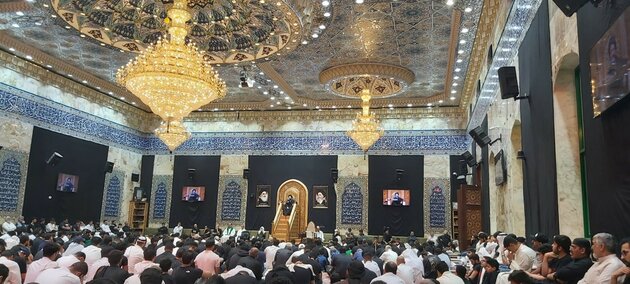Kuwait

Ramadan 2022 in Kuwait
Kuwait is a small oil-rich country on the Persian Gulf with a significant Shii minority. Estimates suggest that at least a third of the country’s population are Shii Muslims. Unlike other countries in the region with significant Shii populations, Shii Muslims in Kuwait enjoy relative religious and political freedom, can practice their religion freely and are also represented in the elected parliament.

During Ramadan 2022, fieldwork was conducted among Shirazi communities in Kuwait. These are Shiis who follow the clerical authority of Iraq-born cleric Muhammad al-Shirazi (1928-2001) and his brother and successor Sadiq al-Shirazi (b. 1942).


The majority of Shii Muslims in Kuwait are of Iranian descent and known as ‘ajami, which means “non-Arab” but do have full Kuwaiti citizenship. Many Shii Muslims in Kuwait who are part of the Shirazi community are also of Iranian descent and incorporate in their community centres elements of Iranian material culture. This display of lamps is known as lala or tekkiyye. In Iran, it used to be customary to place these lamps outside a house in which the loss of someone is mourned. The lamps indicate to visitors and by-passers that this is a house of mourning. Shirazis across the world have such displays in their community centres as a sign of mourning for the death of Imam Husayn, the grandson of the Prophet Muhammad, and of other members of his family.

This is the pulpit in another community centre in Kuwait visited during Ramadan 2022. Green knots are attached to the pulpit. Individuals had made particular vows in order to have their wishes granted and attached these knots in order to receive the blessing of their wishes. Knots act transculturally as symbols of vows. In the English language, one says “tying the knot” when making the marriage vow. In Kuwait, individual Shiis hope that Husayn would help them in having their wishes granted. There is a particular procedure at play which involves the entire community: individuals would tie a knot around the pulpit for Husayn to grant them a wish. Another community member would then untie the knot later for the wish to be granted and make a new knot for their own wish. Hence, knot-tying as part of making a vow is not just an individual act but requires communal support in order for the wishes to realise and hence creates a sociality around the physical presence of the pulpit within the mosque.
